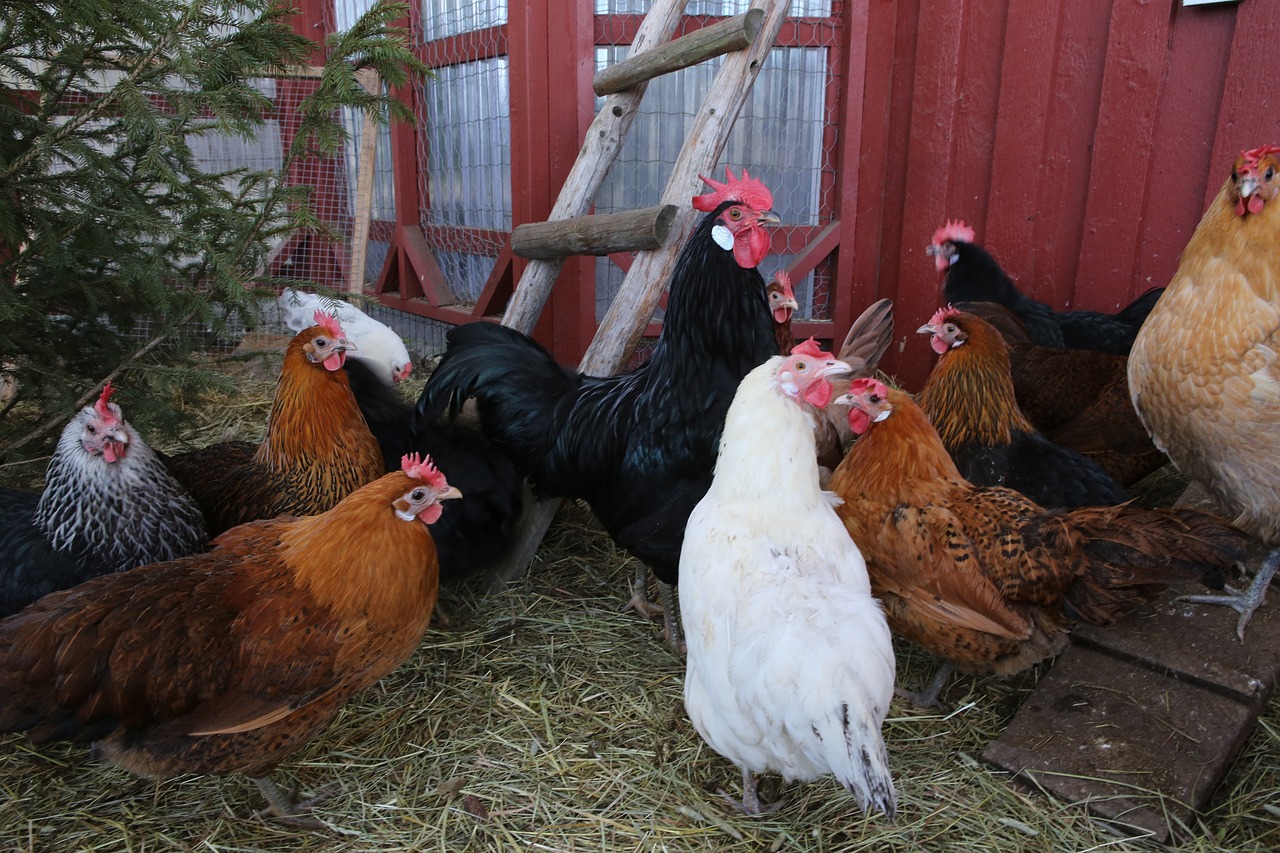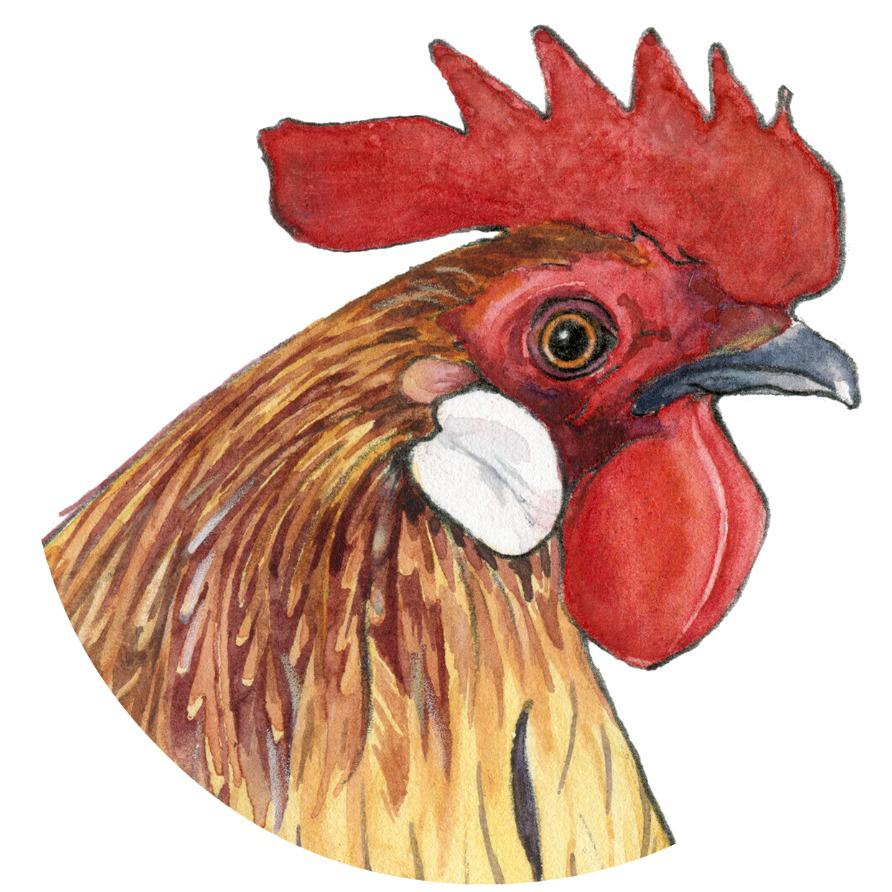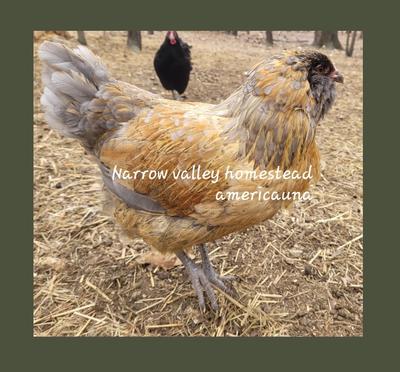Comparing Popular Choices for Chicken Coop Bedding: Pros and Cons
By Amelia Quinn
https://chickenraising101.com/

For many backyard poultry keepers, finding the right bedding for their chicken coops can be unexpectedly daunting. The bedding material used can significantly impact the chickens' health, comfort, and productivity, not to mention the ease of coop maintenance. With so many options in the market, it's easy to feel overwhelmed by choice.
And let's face it, what works excellently for one coop might not necessarily be the best fit for another. So in this comprehensive guide, we will compare popular choices for chicken coop bedding and discuss their pros and cons and identify what suits your specific needs, climate, and chicken breed.
Purpose of Chicken Coop Bedding
Chicken bedding, also known as litter, serves several essential purposes in the coop. Here are some of the main reasons why it's crucial:
Moisture Absorption
One of the primary functions of chicken bedding is to absorb moisture. Chickens produce a substantial amount of waste, which can make the coop damp and unsanitary if not managed properly.
Moist conditions can lead to the development of harmful bacteria and fungi, potentially causing disease. Bedding materials help to absorb this moisture and keep the coop drier and healthier for the chickens.
Odor Control
By absorbing moisture, bedding also helps to control odor. The waste chickens can create a strong and unpleasant smell if it's allowed to build up. A good bedding material will absorb the waste and its associated moisture, significantly reducing the odors.Comfort and Warmth
The bedding provides a soft and comfortable surface for chickens to walk on, reducing the likelihood of foot problems. It also acts as insulation, retaining heat in the colder months and helping to keep the chicken coop warm.
Dust Bathing
Chickens naturally enjoy dust bathing, a behavior that helps them maintain their feather health and control parasites. Certain types of bedding, such as sand or fine dust, can provide a medium for this dust bathing.
Egg Protection
A coop with good bedding provides a soft landing for eggs, reducing the chance of them getting cracked or damaged. Moreover, it’s also important to know when your chickens start laying eggs to anticipate it.
Behavioral Enrichment
Bedding allows chickens to perform natural behaviors like scratching and foraging, which are essential for their mental well-being.
Where Should You Place the Bedding for a Chicken Coop?
- Coop Floor: The largest quantity of bedding goes on the floor of the chicken coop. It should be spread equally all over the surface.
- Nesting Boxes: Bedding should also be placed where the chickens lay their eggs. This helps to keep the eggs clean and prevent them from cracking.
- Roosting Areas: While you do not put bedding directly on the roosts where chickens perch to sleep, it's a good idea to have a thicker layer of bedding beneath roosting bars. Chickens often defecate more during the night, and this added layer will help absorb the extra waste.
- Run Area: If your chicken coop includes an outdoor run, you might also want to put some bedding in this area, especially if the run has no natural grassy or earthy floor. It can help control mud and odor, provide a medium for dust bathing, and allow for natural foraging behavior.
Types of Chicken Coop Bedding
Wood Shavings
Wood shavings are a popular choice for chicken coop bedding derived from the byproduct of woodworking operations. Large flake shavings are considered the best, as they produce less dust, which reduces the risk of respiratory issues in chickens. They also provide effective insulation and odor control, essential for maintaining a healthy coop environment.
Aspen Shavings
Aspen shavings are another option for chicken coop bedding, especially when pine shavings are unavailable. They offer good absorbency and a soft surface for chickens to walk on. While less common and potentially more expensive than pine shavings, aspen shavings are considered safer as they pose fewer respiratory risks.
Pros of Aspen Shavings:
- Like pine shavings, aspen shavings can absorb moisture well, keeping the coop dry.
- Aspen shavings provide a comfortable environment for chickens to walk on.
- Compared to cedar and, to some extent, pine shavings, aspen shavings are less likely to cause respiratory problems.
Cons of Aspen Shavings:
- Aspen shavings are not as widely available as pine shavings, which can make them harder to find.
- Depending on the area, aspen shavings can cost more than other types of bedding.
- Despite being safer than pine and cedar, some studies suggest that aspen shavings can still harm chickens' liver cells and respiratory system, although to a much lesser extent.
Pine Shavings
Pine shavings are a common and affordable choice for chicken coop bedding. They're well-liked due to their pleasant smell and good absorbency, which helps keep the coop dry. They're lightweight, easy to replace and clean, and can be found in many stores. However, they may contain abietic acid, potentially harming chickens' lungs if inhaled.
Pros of Pine Shavings:
- Pine shavings are generally cheaper than other bedding options.
- You can find pine shavings in most feed stores.
- They help warm the coop and provide a comfortable chicken surface.
- It can be used in laying boxes. They're not just for the coop floor.
- Pine shavings can absorb moisture, helping control odor in the coop.
- Suitable for deep litter method. This can help reduce cleaning frequency.
Cons of Pine Shavings:
- Chickens like to peck around in their bedding, and pine shavings could get stuck in their crop, causing crop impaction.
- It can be dusty. This could potentially lead to respiratory issues in chickens.
- Harder to compost. They break down slower than some other materials and could affect soil pH.
- Some pine shavings are not as absorbent as others, depending on their quality and size.
Chopped Straw
Straw is a popular and traditional bedding option for chicken coops made from the stalk portion of grass such as wheat or barley. It's less expensive than hay and contains fewer seeds, making it suitable for bedding and composting.
Straw provides good insulation and cushioning, and its absorbency is up to 7 times its weight. While it's easy to find and locally sourced, it may mat easily if not chopped and will need routine changing for odor control. Organic straw is preferable, especially if using it for composting in the garden. It's easy to maintain and should be replaced entirely every 3 to 4 months for optimal use.
Pros of Straw:
- Inexpensive and easy to find.
- Provides good insulation and cushioning for the chickens.
- Highly absorbent, up to 7 times its weight.
- Suitable for composting and can be used for the deep litter method.
- It can be sourced locally, reducing environmental impact.
- Easy to maintain and sweep up regularly.
- It can be used in laying boxes.
- Less prone to dust, better for chickens' respiratory health.
Cons of Straw:
- It can mat easily if not chopped.
- Requires routine changing for odor control.
- Some straws may contain herbicides and pesticides, so look for organic options.
- Less comfortable compared to other bedding types.
- Needs a dry place for storage to prevent moisture damage.
Sand
The type of sand used for chicken bedding is usually coarse and non-toxic, such as construction or masonry sand. It's important to avoid fine sand, as it can become dusty and may pose a respiratory risk to the birds.
Pros of Sand:
- Many poultry keepers who use sand as bedding praise its excellent odor control properties. Properly maintained sand bedding can significantly reduce unpleasant smells and ammonia buildup in the coop.
- One of the significant advantages of using sand is that it clumps like cat litter, making it easy to spot and clean soiled areas. This helps maintain a cleaner and more sanitary environment for your chickens.
- Chickens love to take dust baths, which helps them keep their feathers clean and free from parasites. With sand bedding, your flock will have access to a 24/7 spa-like dust bath, promoting their overall health and well-being.
Cons:
- While some chicken owners praise sand for its odor control, others argue that it can be less effective than alternative bedding materials. If not adequately maintained, sand can still emit unpleasant odors.
- Unlike other bedding materials like straw and wood shavings, sand does not compost. This means you won't be able to use the soiled sand as fertilizer for your garden, unlike traditional bedding options.
- Sand does not provide much cushioning, which can be a concern for chickens jumping from their roosts or nesting boxes. The lack of cushioning may lead to rough landings and potential injuries.
- Dry sand can be dusty, especially when disturbed during cleaning or when chickens scratch around. The dust may pose a risk of respiratory issues for both chickens and their caretakers.
Hemp Bedding
Hemp bedding is a comfortable, fiber-rich bedding created from the hemp plant's stem. This stem, also known as the hurd, is dried and ground into a substance resembling straw to produce the bedding. Hemp is derived from certain cannabis plants but it is specifically grown for its high fiber content and lacks any mind-altering substances.
Pros of Using Hemp Bedding:
- Hemp bedding is renowned for its high absorbency. This helps keep the coop dry, reducing the potential for harmful bacteria and fungi.
- Its excellent absorbency capabilities also mean hemp bedding effectively controls unpleasant odors, especially the ammonia smell common in chicken coops.
- Unlike some other bedding options, hemp bedding is long-lasting, requiring less frequent changing. This can make it a cost-effective choice over time.
- Hemp bedding composts easily, making it an ideal choice for those using the deep litter method.
- The straw-like texture provides a comfortable and warm surface for chickens to walk on and lay their eggs.
- Hemp bedding offers a natural resistance against pests and insects.
- It is a sustainable and environmentally friendly crop, which makes its bedding a great choice for those looking to reduce their ecological footprint.
Cons of Using Hemp Bedding:
- Despite its long-term cost-effectiveness due to the reduced replacement frequency, the initial purchase cost of hemp bedding is typically higher than traditional options like pine shavings or straw.
- Hemp bedding may not be readily available in all regions or at every feed store. This could present a challenge for those who want to switch to this type of bedding.
Pine Pellets
Pine pellets are a cost-effective and efficient option for chicken coop bedding. They're known for their excellent absorbency, low dust production, and easy cleanup. With a natural scent, they help maintain a clean and comfortable environment for chickens.
Pros of Pine Pellets:
- Pine pellets are great at soaking up moisture, which helps to keep the coop dry and control odors.
- They produce less dust than many other bedding types, contributing to better air quality in the coop.
- When they get wet, pine pellets break down into sawdust, making it easy to remove and clean soiled areas.
- Pine pellets are typically less expensive and readily available at farm supply stores.
- They can be used alone or mixed with pine shavings to enhance the bedding's absorbency.
Cons of Pine Pellets:
- Compared to other types of bedding, pine pellets may not provide as much cushioning for the chickens, making them less suitable for nesting or roosting.
- The size of pine pellets can vary, with larger pellets possibly being less comfortable for smaller breeds or chicks.
Leaves
Leaves can be used as chicken coop bedding, but they have some pros and cons. Leaves are free, offer good insulation and cushioning, and provide a natural environment for chickens. They are an excellent boredom buster as chickens like to stir them up.
They are also great for composting and can be used in laying boxes or deep litter. However, there are some drawbacks, such as being seasonal, harboring insects, and requiring chopping to improve absorbency. It's crucial to dry leaves fully to prevent mold growth.
Pros of Leaves:
- Leaves are readily available and cost nothing.
- They provide a comfortable surface for chickens to walk on and rest.
- Using leaves gives a more natural feel to the coop.
- Chickens enjoy scratching and stirring up the leaves, keeping the bedding fresh.
- Leaves make great compost material.
- Not prone to dust, contributing to better air quality in the coop.
- Leaves can be used in laying boxes and the deep litter method.
Cons of Leaves:
- Leaves are only available during certain times of the year.
- It can attract pests that may become a problem in the coop.
- Leaves need to be chopped or shredded to improve their absorbency.
- It must be fully dried before use to avoid mold formation.
Bedding for Chickens During Winter
The best winter bedding for chickens is an absorbent material that can keep the coop dry and prevent moisture buildup. While straw might seem like a good option due to its softness, it is not very absorbent and can quickly become wet from chicken droppings. Wet bedding can lead to mold growth, posing a health risk to the hens.
Instead, it's better to use litter that can effectively absorb moisture. Two excellent choices for winter bedding are pine pellets and hemp. These materials have superior absorbency, helping to maintain a dry and hygienic coop environment throughout the colder months.Deep Litter Method
You can also do the deep litter method during the winter in a chicken coop. The deep litter method is a way of managing chicken waste that involves adding new bedding to the coop regularly and turning the bedding over to help it compost. This method can help to keep the coop dry and odor-free, and it can also help to reduce the risk of parasites.
The deep litter method works well in the winter because it helps to insulate the coop and keep it warm. The bedding helps to trap heat, and the composting process also produces heat. This can help to keep the coop warm even in cold weather.
To use the deep litter method in the winter, you must start with a layer of bedding at least 6 inches deep. You can use any absorbent bedding, such as straw, wood, or pine shavings. Once you have added the initial layer of bedding, you must add new bedding every week. You should also turn the bedding over every week to help it compost.Chicken Coop Beddings for Brooders
Chicken bedding for brooders should be soft, absorbent, and safe for young chicks. Three commonly used options are pine shavings, straw, and hemp bedding.
Pine shavings are popular for their soft texture and availability, providing a cozy surface for the chicks. You should choose dust-free pine shavings to avoid respiratory problems. Straw is another suitable choice, offering insulation to keep the chicks warm. However, it's essential to ensure the straw is clean and free from mold.
Hemp bedding is gaining popularity as a safe and absorbent option, effectively reducing moisture and maintaining a healthy environment. Its virtually dust-free nature improves air quality for the chicks.
When selecting bedding for brooders, prioritize the comfort and well-being of the delicate chicks.Chicken Coop Beddings for Chicks
For raising baby chicks, two excellent bedding options are shredded paper and soft aspen shavings. Shredded paper is a cost-effective solution, especially if you have a paper shredder at home. It provides a soft, absorbent, and fluffy surface perfect for the chicks' comfort and well-being.
However, it's essential to avoid using slippery materials like glossy magazines or newspapers, as they may cause slipping hazards for the chicks. Plain white paper or scrap mail without plastics or strong inks is ideal.
Aspen shavings, typically found in the hamster section of pet stores, are another popular choice for chick bedding. Ensure you select a low-dust option to prevent respiratory problems in the chicks. These soft shavings offer a comfortable surface for the chicks to walk on and provide good absorbency to keep the coop dry.
Avoid using sawdust, which can cause respiratory issues and is unsuitable for chicks. Overall, shredded paper and soft aspen shavings are excellent and safe bedding options for raising healthy and happy chicks.
How Many Times Should You Change the Bedding for Chickens?
The frequency with which you should change the bedding for your chickens depends on a number of factors, including the number of chickens you have, the type of bedding you use, and the climate you live in. However, as a general rule, you should change the bedding at least once a week.
If you have a small flock of chickens and you use absorbent bedding, such as pine shavings, you may be able to get away with changing the bedding every two weeks. However, if you have a large flock of chickens or use less absorbent bedding, such as straw, you may need to change the bedding more often.
In addition to the frequency of bedding changes, it is also important to remove any wet or dirty bedding immediately. Wet bedding can quickly become a breeding ground for bacteria and parasites, making your chickens sick and worse, your hens will stop laying eggs.
What Should You Avoid Using as Bedding for Chickens?
- Cedar shavings: Cedar shavings can be toxic to chickens. They can cause respiratory problems and even death.
- Sawdust: Sawdust can be dusty and can irritate chickens' respiratory systems. It can also harbor parasites.
- Kitty litter: Kitty litter is not designed for chickens and can harm them. It can contain harmful toxic to chickens, and it can also harbor parasites.
- Shredded newspaper: Shredded newspaper can be dusty and irritate chickens' respiratory systems. It can also harbor parasites.
- Grass clippings: Grass clippings can mold quickly, which can be harmful to chickens. They can also harbor parasites
Choosing the Right Bedding for Your Coop
When it comes to chicken coop bedding, there are several popular choices, each with its own set of pros and cons. The right bedding choice will depend on your specific needs, the size of your flock, and your budget.
Keeping a healthy and tidy environment for your chickens is crucial for their well-being, and it can be achieved through routine upkeep and correct bedding management. By knowing the traits of each type of bedding, you can make a wise choice to promote the comfort and health of your chickens.
Ready to learn more? Check out all of our helpful articles on our Raising Poultry 101: Beginner's Guide to Raising Chickens page. Never stop learning!
What can we help you find? Search the website:
What's New Around Here?
-
IN - Bob White Quail
I have northern bobwhite quails available at all ages. Please contact me if interested. 765-430-1171 -
AR - Narrow Valley Homestead-BBS Ameraucana hatching eggs & chicks
We offer hatching eggs, chicks, & may sometimes have hens/roosters for sale. We are located in Harrison, Arkansas and you can find us on Facebook! https://www.facebook.com/narrowvalleyHOMESTEA -
NY - Bantam Salmon Faverolle Eggs For Sale
One dozen+ eggs ($60+shipping). Eggs are from the same line that won BV and BB at the 2024 NE Poultry Congress in Spring MA. No older than 7 days prior
Return to the Home Page









